Radar And East Lothian
Radar Early Warning

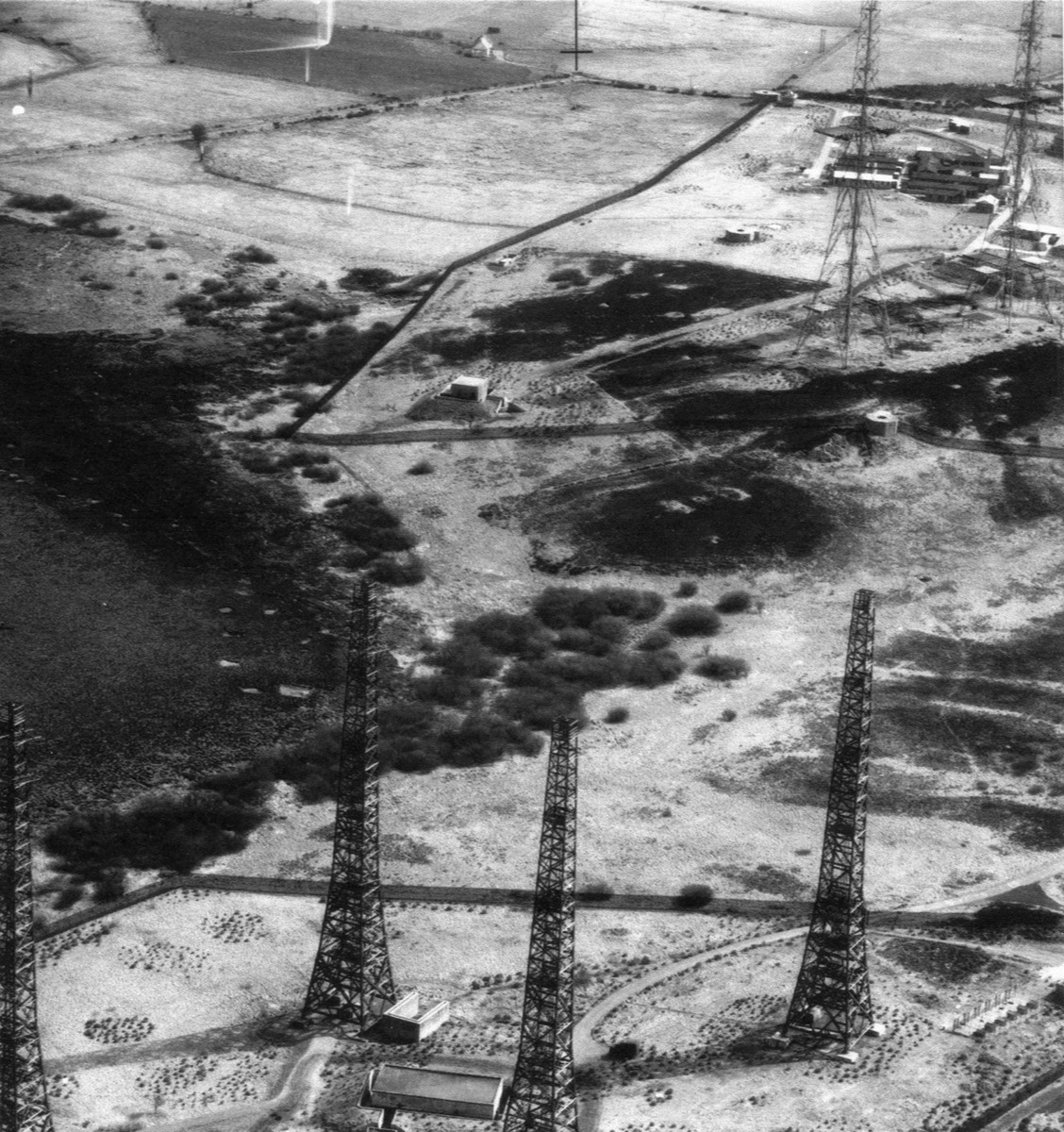
Chain Home Radar masts at Drone Hill on Coldingham Moor, Berwickshire.
Its importance in this regard is best illustrated by its failure to warn the Forth's defences of the first air raid on 16th October, 1939, when a blown valve kept it off air at just the wrong moment.
The area is now occupied by a caravan site, but evidence does remain of a number of buildings which once formed the radar station. Three Chain Home Low radar stations were sited nearby: near Thorntonloch; on Drone Hill itself and on Lamberton Moor.
Dirleton Ground Control Intercept Station
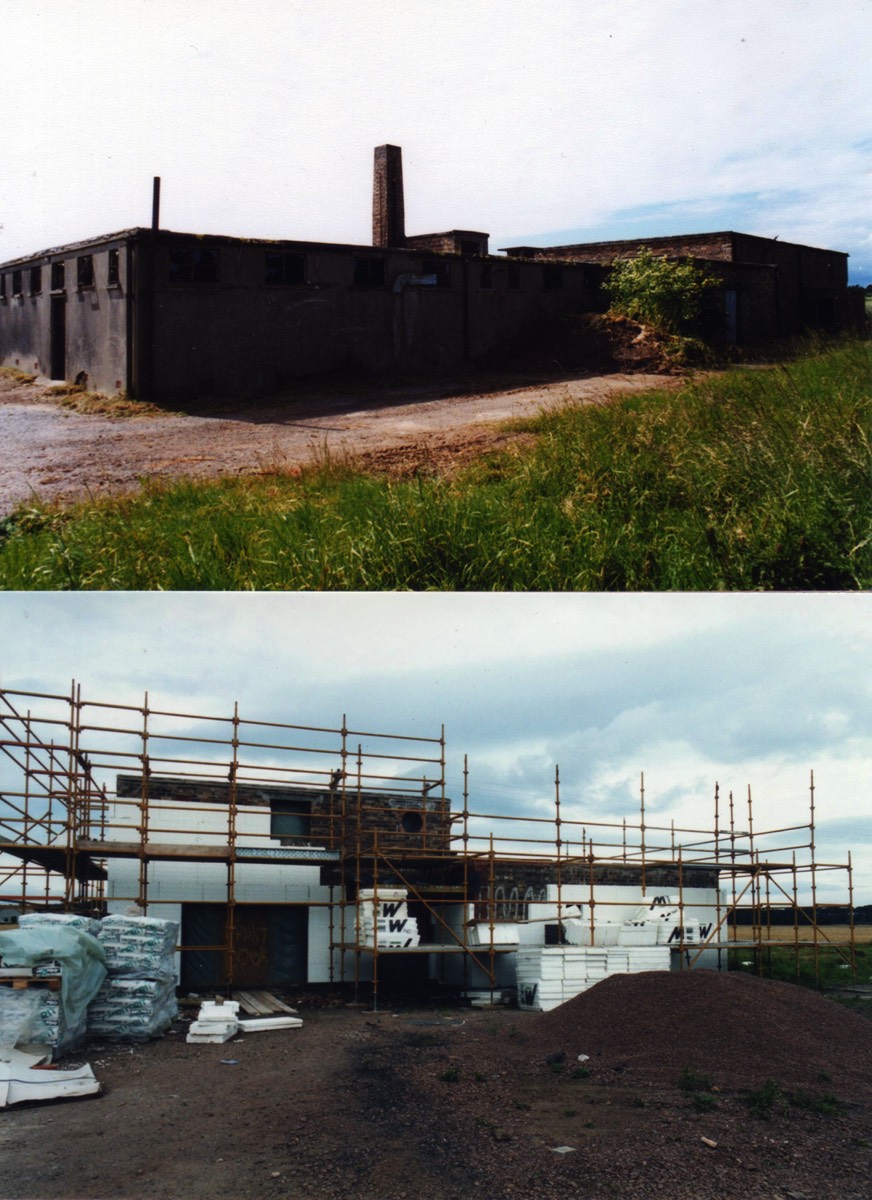
Dirleton Ground Control Intercept Station in its original form and during conversion to a private dwelling.
Dirleton Ground Control Intercept Station
The task of collating the information gleaned from the radar installations on or around Drone Hill, from its own radar and presumably from the Royal Observer Corps posts throughout the area, was undertaken at this site for the whole of the Edinburgh area. The station’s task was to process information regarding incoming aircraft, to identify friend from foe and to react accordingly. Its varied aerial arrays and radar sets allowed its operatives to assess the height, number, speed and direction of incoming aircraft.
That information was then used to direct the RAF’s day or night fighter response from stations such as those at Drem and Turnhouse. It was clearly vital work and its importance was illustrated by the expansion from an initial ‘station’, housed in temporary mobile trucks and caravans in 1940, to a permanent set of structures which remain to this day, albeit now converted to a private home.
The building lies just north-east of Dirleton village on the road towards Yellowcraig beach. The station was permanently staffed and was very active in the early years of the war. Later, as Luftwaffe incursions over the Firth of Forth and Lothians declined, the station’s duties came to focus more on managing traffic from Drem and Macmerry and the continuous training flights originating from East Fortune. In this role it worked closely with No 60 Operational Training Unit, which trained RAF night fighter crews based at East Fortune, and with No. 784 Squadron, FAA, flying from Drem and doing much the same work for the navy.
Gradually as the war drew to a close the need for either active interception or training evaporated and the W.A.A.F. radar operators were posted away in December 1945. Dirleton G.C.I.S. closed down in March 1946 although it was used by No. 3603 (City of Edinburgh) Fighter Control Unit for training at weekends from the late 1940s until 1954, when a new station was opened at Anstruther.
Radar Research And Testing at East Lothian's most secret wartime installation
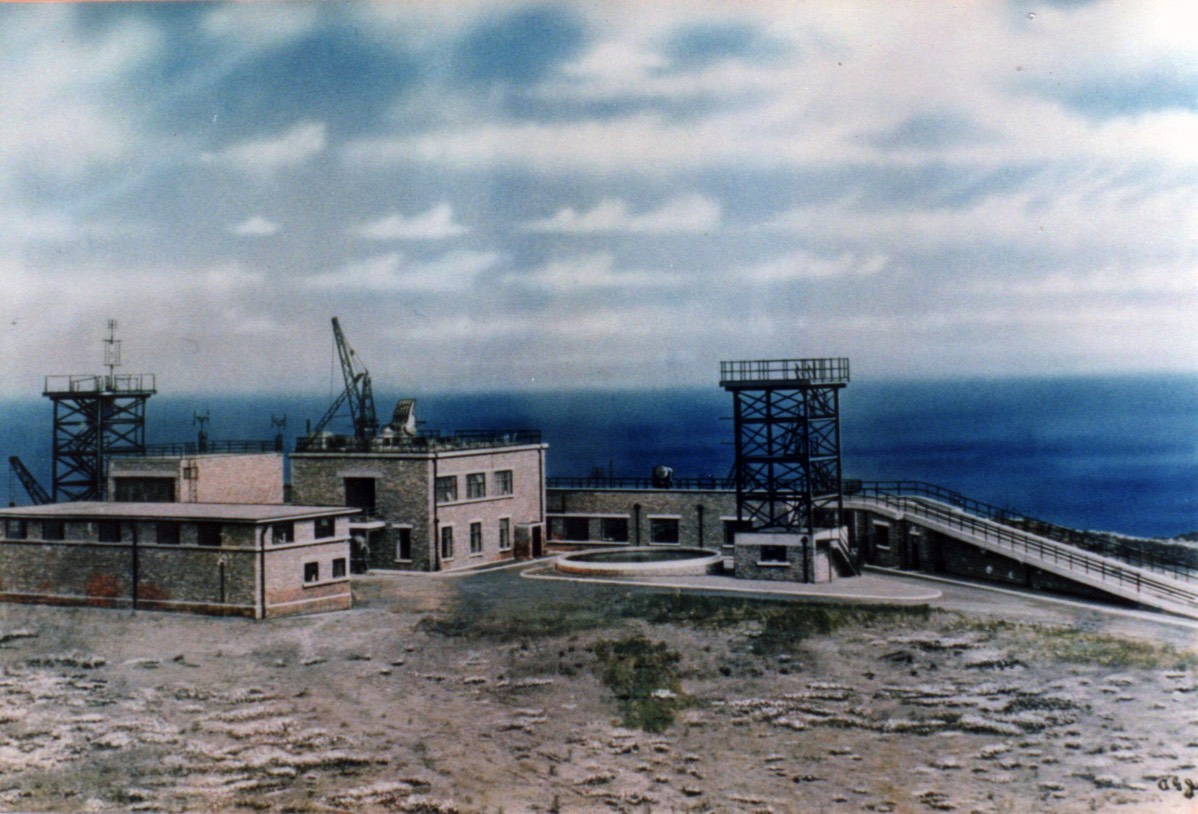
Admiralty Signals Establishment Extension, Gin Head, Tantallon.

Relative positions Of A.S.E.E. And Surrounding Features.
A.S.E.E. is to the left, the Bass Rock in the centre and Tantallon castle on the right.
Admiralty Signals Establishment Extension, Gin Head, Tantallon
Initially, the three Armed Services carried out research into different applications of radar under separate roofs. The pressure of the war forced cooperation on the air force and army and after a number of moves, including to Stirling, the bulk of both’s wartime research and development in radar took place in Great Malvern near Birmingham.
The Navy’s wartime radar research work continued to be largely based in Portsmouth, for example, at Eastney Fort East, though cooperation with RAF technicians was often close. However, the research into and development of new ship borne radars required the construction of testing stations, apparently some twenty-six of them, in a wide variety of buildings around the UK. One such trials or testing station was constructed here at Gin Head by Tantallon castle in 1943.
Like its sister stations, the Admiralty Signals Establishment Extension, Gin Head, was of the utmost importance to the national war effort and as a result was, understandably, top secret. Penetrating that veil is proving an exacting task. However, from what we know at present, it would appear that some of the work undertaken at Gin Head can be organised under the following headings:
- Trialling, testing and development of ship borne radar sets and systems.
- Research into the possibility of using infra-red to identify submarines and ships.
- Research into the means of disguising ships from infrared detection.
- Testing proposed means of fooling German radar systems, sometimes using captured examples.
- Testing the potential of Window as a radar deception method prior to D-Day.
NOTE: This facility was never part of the Chain Home or Chain Low early warning systems and, where confusion exists, it is likely that Tantallon is being confused with the Chain Home site at Drone Hill on Coldingham Moor, not all that far distant to the east.
Why Radar Research At Tantallon?
To a radar specialist in the 1940s the geography of the Gin Head/Tanatallon and Forth areas was as attractive as iron filings to a magnet. The area offered the following advantages for this kind of work:
- Cliffs which were approximately the height of a ship’s mast.
- A position which directly overlooked the sea.
- Islands (the Bass Rock, Isle of May) and the Fife coast: fixed structures which provided calibration for radar and which generated clutter on a radar screen.
- Close proximity to airfields in East Lothian and in Fife whose aircraft could be used in tests.
- Close proximity to the Admiralty’s facilities at Rosyth from where ships and submarines could be used to verify operational and test equipment.
- Naval vessels moving up and down the Forth as random radar ‘targets’.
- In the case of Tantallon castle, a perfectly secret and secluded area hidden from both the landward side and from German radar.
In short Tantallon was one of the best sites for research into wartime radar available in the UK at the time.
The station was probably constructed in 1943 and in March 1944 100 expert technicians and researchers arrived from Malvern. The next two years were to be busy ones at Tantallon.
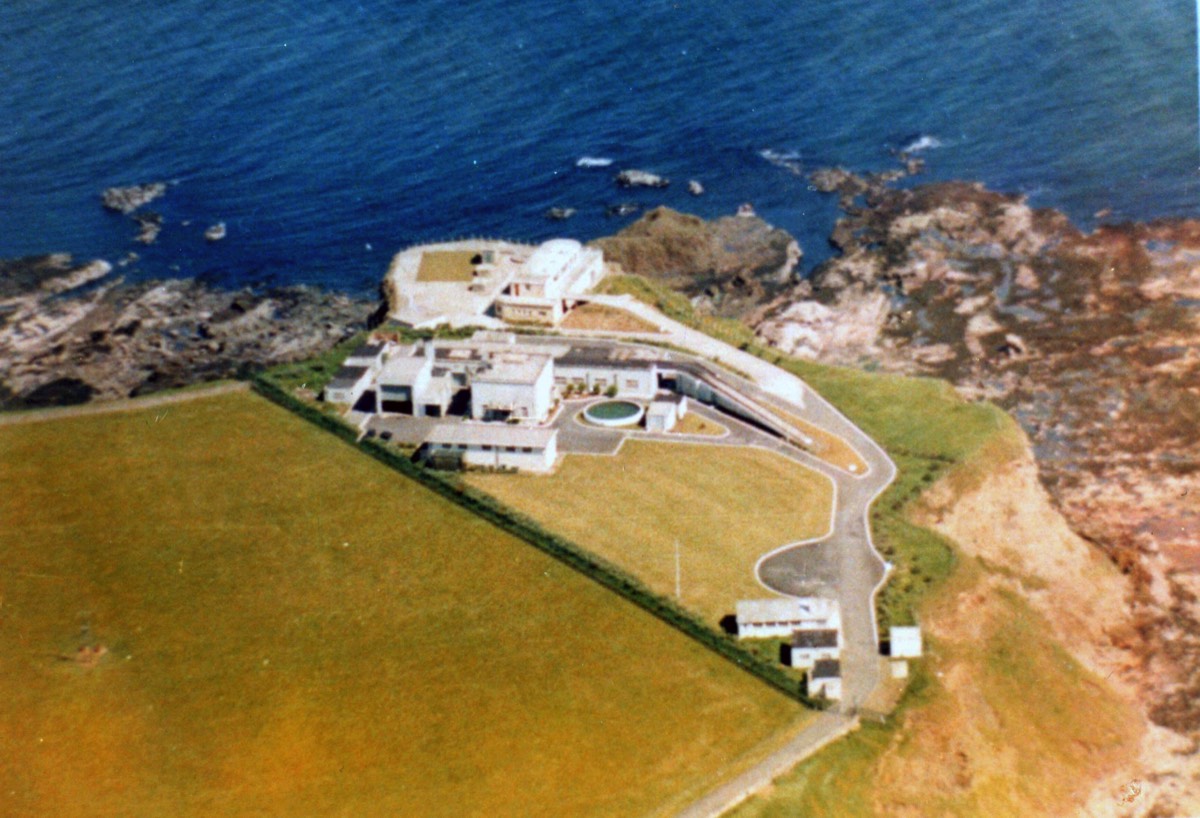
An aerial photograph of the radar research station at Tantallon showing how the buildings had an uninterrupted view of the sea and the position of the ramp (the end of which can also be seen in the first photograph above.
George Exeter - at Tantallon - 1944
George Exeter was sent to Tantallon after working in the Admiralty Signals Establishment in Portsmouth in 1944. Mike Exeter is his grandson. In 2009, we interviewed Mike at Tantallon and the following records this interview about the wartime work done there.
Ship Borne Radars
Mike - “My grandfather came up here mid ’44. At that time, the Battle of the Atlantic and a lot of the radars and other applications, were fairly well advanced but there were other requirements for improvement, so they were working on newer models all the time. Models known to have been used here are the 960, the 980 and the 981, the latter of which was more as we understood it, that is a radar for the location of an object in a particular position around a ship. The 980 was for use in an aircraft and was involved with height finding. This was a less successful design but the 981 was quite a successful design and it met all its requirements. Tantallon had a very close connection with Rosyth and it was easy to obtain suitable target vessels. Most of the aircraft used in the testing of ship borne radars came from Fife.”

George Arthur Exeter.
Radar Deception Before D-Day
Mike - “In the run up to D-Day this was an extremely busy facility. It was planned to use Radar deception to fool German radar and its operators into thinking that there was an opposing force, which actually didn't really exist, approaching the French coast. The plan to do this was to use Window, a radar jamming system (1), and the work was carried out in quite a feverish atmosphere. The idea was that aircraft would drop strips of window in a precise and regular pattern to imitate the advance of a large fleet of ships. Naturally those patterns had to be set up, checked out and proven and this was an ideal site for that, and a lot of work was done here.”
David - ‘So the trials to prove this deception would work were carried out at Gin Head?’
Mike - “Many, many people who were directly involved in planning for the Normandy landings and in the development of deception tactics at that time, did that work here. The tests to show that [aircraft were able to carry out this task] were carried out here and Joan Curran, who had invented Chaff (or Window) when working at the Telecommunications Research Establishment, came to Tantallon to observe the tests. [She came] for a couple of days with about 100 people who were involved in analysing the test data to make sure they were accurate enough to fool the Germans.”
Dr Alfred Price, in his book “Instruments of darkness: the history of electronic warfare”, described how, while 617 and 218 Squadrons trained on perfecting the exacting timing and flight patterns necessary to carry out the above, the work to test the idea against German radars went on apace at Tantallon. He wrote,
"While they were training, he [Cockburn] arranged with Mr J.B. Supper to move the captured Wurzburg, Freya and Seetakt radar sets up to Tantallon castle on the Firth of Forth. Here they went on air again, far from the curious stare of the German radio monitoring service. The ghost 'fleet' spoof was tried out against the sets and found to be completely successful."
These German radar sets, some of which were quite large pieces of machinery, were actually set up in the grounds of Tantallon Castle itself, well hidden from the prying eyes of German radar behind its huge, stone curtain wall.
The actual D-Day operations, codenamed ‘Glimmer’ and ‘Taxable’, were carried out by the Stirlings and Lancasters of 218 and 617 Squadrons on the night of the D-Day landings and were very successful in adding to the general state of confusing intelligence the German High Command was receiving. It was some time before it appreciated that the Normandy landings were reality and the Pas de Calais a series of deception masterstrokes.
(1) 'Window' was the code name given to a means whereby aircraft could interfere with, jam or swamp enemy radars. It comprised bundles of aluminium strips of varying lengths which would be thrown out of an aircraft at regular intervals. These would reflect German radar signals and, to the German operators, it would appear that a much larger bomber force was approaching. Nowadays, Window is known as Chaff.
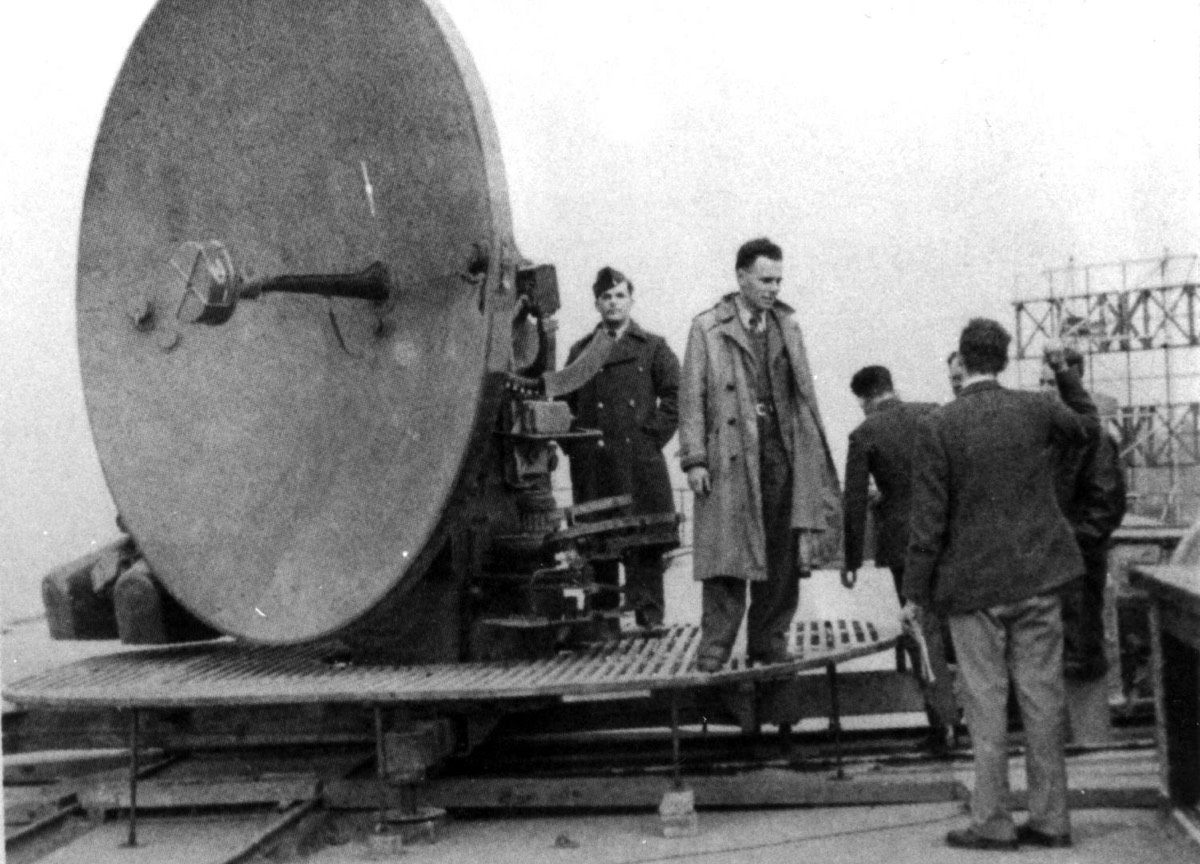
A captured Wurzburg radar being tested at Tantallon Castle.
Thomas Gold - Eyewitness
Post war Austrian born Thomas Gold was to become an astrophysicist and cosmologist and a professor at Cornell University. During the war he worked with Fred Hoyle and Hermann Bondi on a range of radar research projects for the Admiralty. It was in this capacity that he came to A.S.E.E. Tantallon in charge of a programme to study the interference radar signals suffered from clutter (unwanted radar reflections) produced by waves on the surface of the sea.
In his book, “Taking the back off the watch: a personal memoir”, Gold wrote about his early work and the projects that ultimately brought him to Tantallon. The main one was to study the effects wave clutter would have on the reception of radar waves when they were dispersed by a rough sea. These tests, carried out both at Tantallon and in Cornwall, were made using the latest radar sets developed by the Admiralty and made good use of regular flights from all the aerodromes in the Lothian and Fife region. Gold was also able to organise particular individual flights, often from Fife and involving the Fleet Air Arm or from East Lothian airfields. He gained this ASEE/FAA cooperation almost nightly at the bar in the North Berwick hotel he was staying at. There he would meet a Commander North who would note and later translate Gold’s requests into action. Clearly Tantallon’s proximity to airfields was a big bonus for researchers like Thomas Gold. The proximity to Rosyth was also a boon and many ships, both large and small, were utilised in tests by Tantallon’s research ‘eyes. Gold’s results were sent to all ships with newly installed radar sets to allow their operators to utilise them to the best advantage. Gold’s research at Tantallon gave ships the advantage of precious seconds in which to respond to incoming enemy aircraft.*
*T. Gold: “Taking the back off the watch: a personal memoir”, (Springer Heidelberg, New York, 2012) ps 23-24
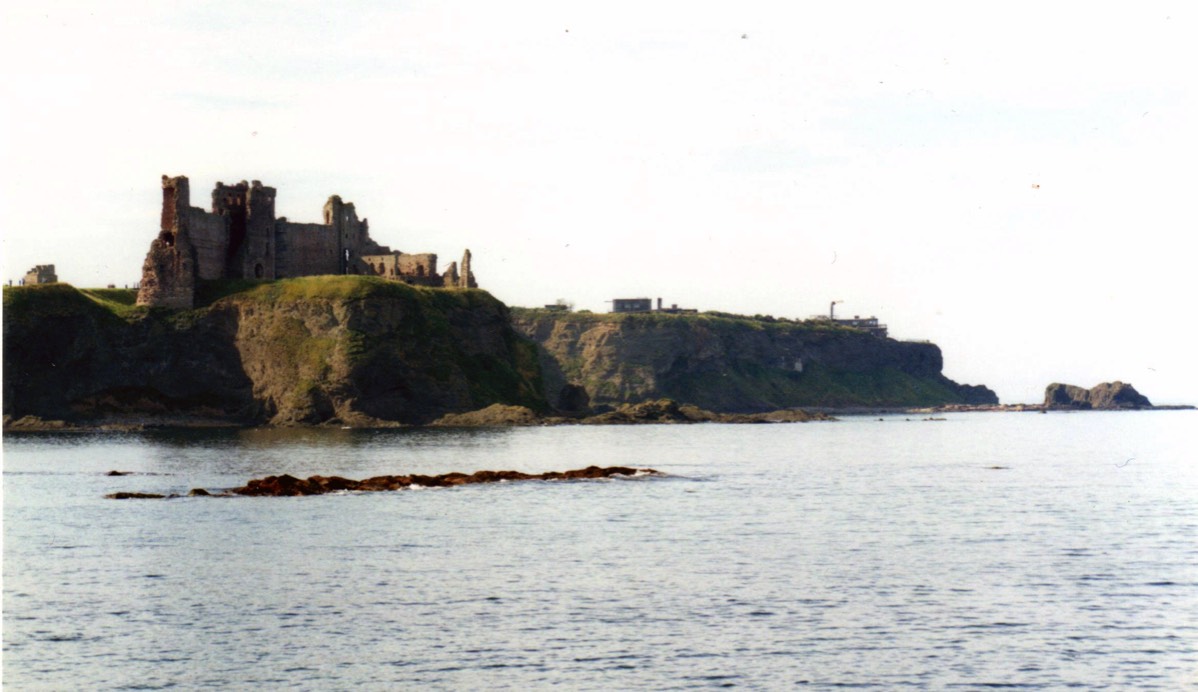
Some general views of A.S.E.E. Tantallon showing both its close proximity to its neighbour,
Tantallon Castle, and to the sea.

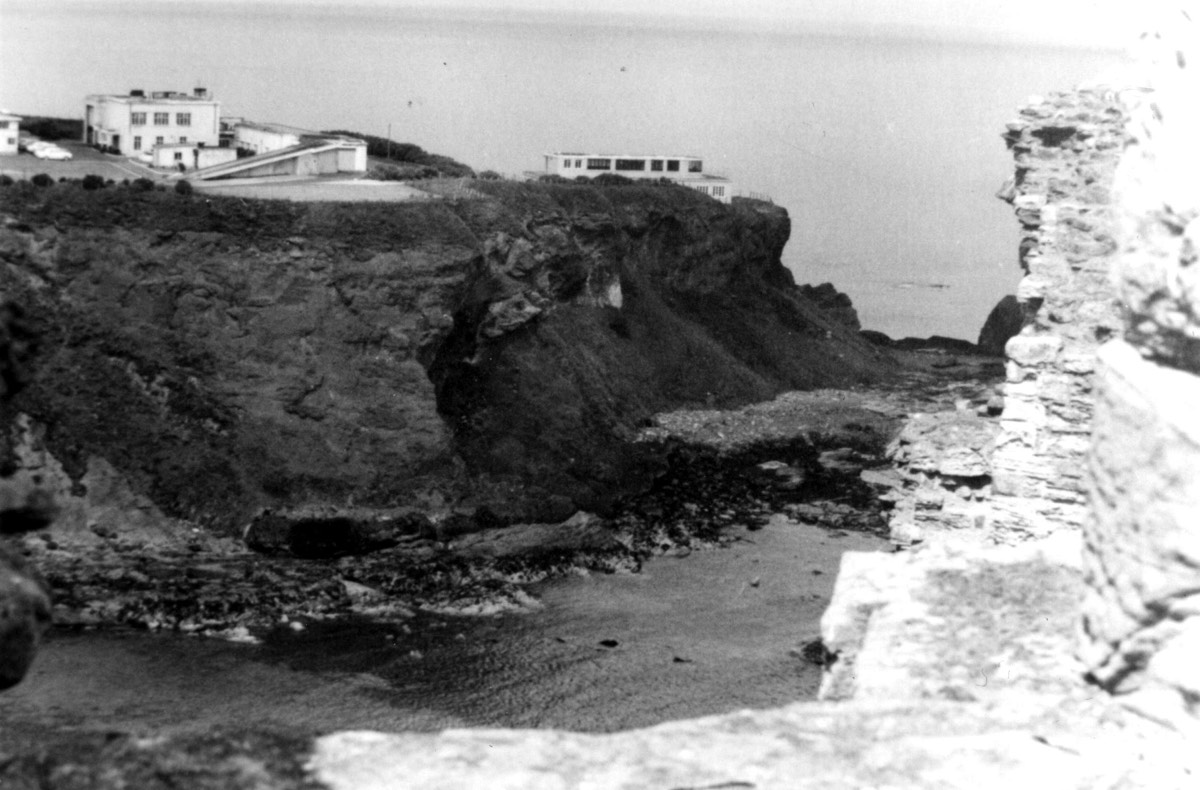
Abdullah and Infrared research
Dr Price also mentions trials mounted at Tantallon involving the use of a device code-named ‘Abdullah’, an air-borne device which would enable a pilot to identify an active Wurzburg radar site and, having pinpointed it, attack and destroy it. These tests were carried out against the Tantallon Castle Wurzburgh from a Typhoon equipped with Abdullah.
Infrared Research
Research into the use of infrared to detect ships and submarines at sea was undertaken at Tantallon. The thesis was that it might be possible to detect the presence of either a surface vessel or a submarine by detecting the heat from the exhaust gases emanating either from the ship’s funnel or from the U Boat's exhaust. The heat would show up well against the background of the cold sea.
Mike - “Work with infrared was obviously very important and [significant efforts were made] to utilise it during the war. I believe work was done on the infrared detection of the heat emanating from ships’ funnels at great distances." [HMS Velux was involved in these tests - see photo below]
Dr Ernest Putley, a radar expert who wrote widely on the history of radar research, was in no doubt about the importance of the research work carried out at Gin Head and had the following to say about infra-red research at A.S.E.E. Tantallon. He wrote:
"This work played a basic part in the development of today's applications of infrared and thermal imaging. [Editor’s underlining] I think, therefore, that you should be aware of the important part played by the work at Tantallon Castle."
The site at Tantallon Castle proved very suitable for Infrared. Work on thermal locator countermeasures began in October 1944. Three topics were considered. First, the thermal camouflage of targets. The screening of hot spots, e.g. funnels, by canvas screens, forced cooling by water jets or water jackets, [even] shielding of ships by special smokes and deception by the use of special thermal sources to simulate real ships - a thermal moonshine! An Arran, a captured Donaugerat and American Farrand equipment were used to assess the effectiveness of these various measures. The programme began in October 1944, but it was suspended in January 1945 to give way to a more urgent project - the Infrared detection of a Schnorkel - the breathing pipe enabling submarines to use their diesels whilst submerged.
It was generally supposed that by means of centrimetric radar, both ship- and air-borne, the Battle of the Atlantic was finally won. But Doenitz and Hitler only saw this as a reverse. They had plans to recover the situation. The first of these was the Schnorkel breathing tube which made the U-boats almost invisible to radar. The Admiralty's response was to investigate, at the highest priority, the use of Infrared to detect either the Schnorkel or the exhaust gases emerging from it. Tantallon was ideally suited for this work because our submarines could cruise off the shore for detection tests to take place. And, of course, tests on improved radar systems could also take place.
The anti-Schnorkel programme was regarded by the Admiralty as having overriding priority. It saw Schnorkel as a major threat which could still lead to our defeat. We put great efforts into improving our radar systems, and, as a forlorn hope, Infrared detection was examined. Between 1 March 1945 and 24 September 1945 regular (almost weekly) progress reports on the progress of the IR work at Tantallon were written. Tests were made on the emissions from a captured U-boat. It was then found that more sea room was required for ship trials and the submarines were sent to Loch Goil for further work.
[Initial work] on the fundamental subject of the detailed study of the atmospheric transmission of IR radiation [was begun at Tantallon] as early as March 1945 …with the construction of two small buildings across the bay from the castle. With the main measuring apparatus in the laboratory at Gin Head, transmission paths across the bay and back could thus be used."

Plan of the optical path constructed to test the atmospheric transmission of infra-red.
"The results obtained…showed a clear transmission band around the wavelength of 10µm. This is particularly important because the radiation from bodies around room temperature peaks near 10µm. The wartime development of infrared technology had revealed the considerable potential of infrared applications exploiting this radiation, but that considerable resources would be needed to achieve it. It was therefore important to know that this radiation would not be absorbed by the atmosphere. The conclusion of the Tantallon experiment was that the effort to exploit this radiation would be well rewarded. Today, the widespread use of thermal imaging and other IR applications confirms how correct were the conclusions drawn at Tantallon."
One of the ships involved heavily in the infrared tests mentioned by Dr Price was HMS Velux, an old Lend-Lease destroyer. Its crew must have pondered long and hard about the reasons behind the efforts taken to hide or cool their ship’s funnel! Efforts which included using cold water to cool it off or efforts taken to wrap the ‘hot’ areas in soaked and cooling jackets.
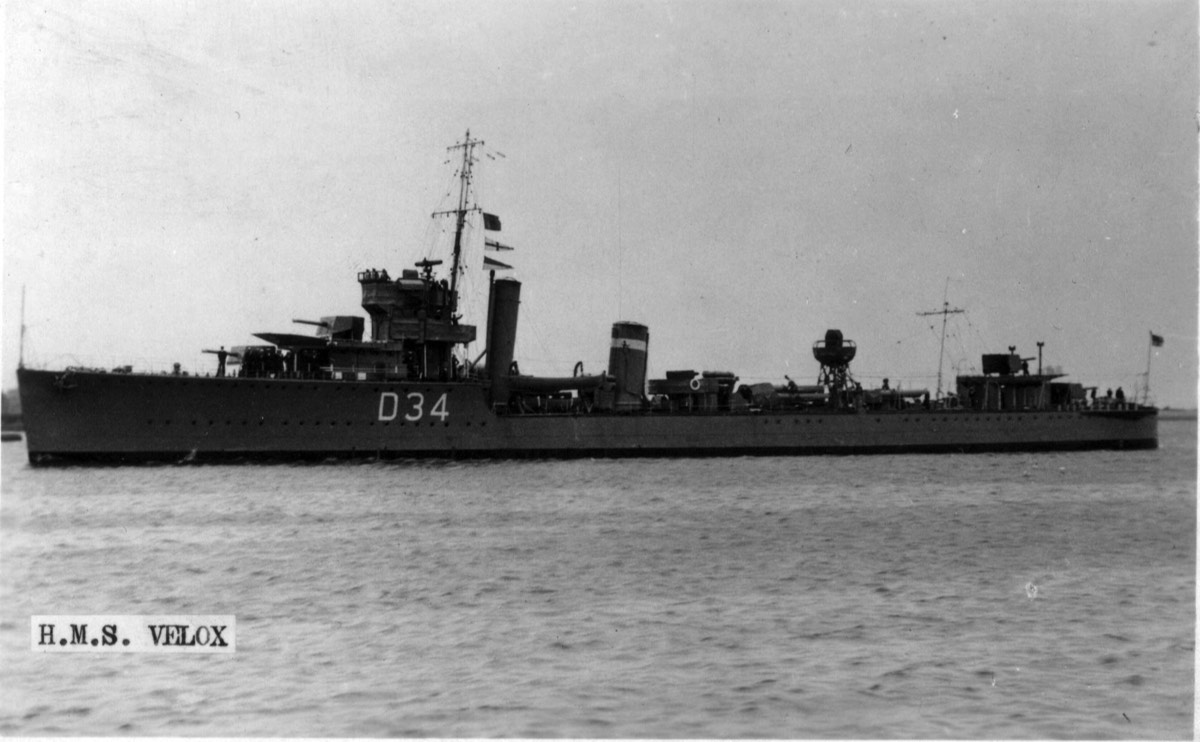
After The War: Ferranti's work in radar
Tantallon’s usefulness as a radar testing and development facility was not surrendered quickly once the war was over and the radar technicians dispersed elsewhere or were demobbed. The Admiralty continued to use it until 1984 when it was sold to Ferranti, a concern with a major investment in the Lothian area. One of its test planes, a Gloster Meteor, still resides in East Lothian at the Museum of Flight. It is not unreasonable to assume that this aircraft was often used in conjunction with tests carried out at Tantallon. This work came to an end in 1994 when the site was abandoned. In 2015 it was put on the market for private development.
Alastair Walker, who worked for Ferranti in the 1970s and 1980s, wrote the following description of the kind of activities which went on at Gin Head after the war. He wrote:
"Situation
During the period around the 1970s and 80s, Ferranti, Edinburgh, was at the forefront of airborne RADAR development and manufacture. RADAR systems included the Forward-Looking Radar developed for the cancelled TSR2 program, The Seaspray Maritime Radar deployed in the Lynx helicopter and most significantly the Blue Fox Radar deployed in the Sea Harrier.
Flight Trials sites were in use at Gin Head beside Tantallon Castle and Fast Castle where a single decker bus was kitted out with various RADAR systems. The sites were chosen as they sat on cliff tops and gave a look down attitude to the sea and also gave an open view out to the North Sea where the RADAR systems could be tested against live airborne and sea born targets.
Objectives
Seaborn targets were of particular interest given the role of the various aircraft deploying these RADAR systems. Sea Clutter is a challenge for any RADAR system and Ferranti was developing techniques to enhance the performance of the above RADAR systems and characterise the nature of Sea Clutter for use in future design of the next generation of RADAR systems.
Activities
In the accompanying photographs, the Ferranti bus at Gin Head had all three of the above RADAR systems inside. Trials were carried out to determine the performance of the RADAR systems to detect small targets in the sea in various sea states. At various times buoys and small craft were deployed as targets. Techniques were developed to optimise the performance of the different RADAR systems and these techniques influenced the designs of the next generation of RADAR systems."
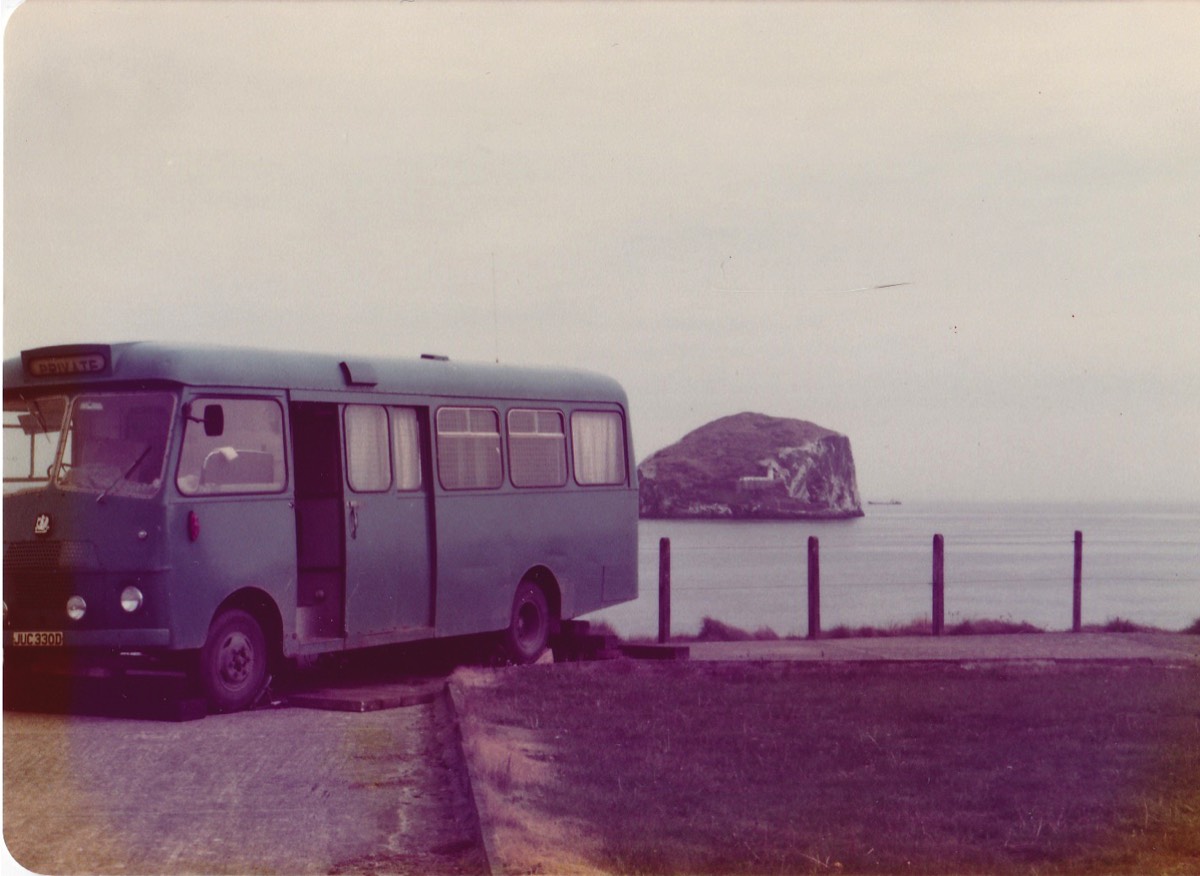
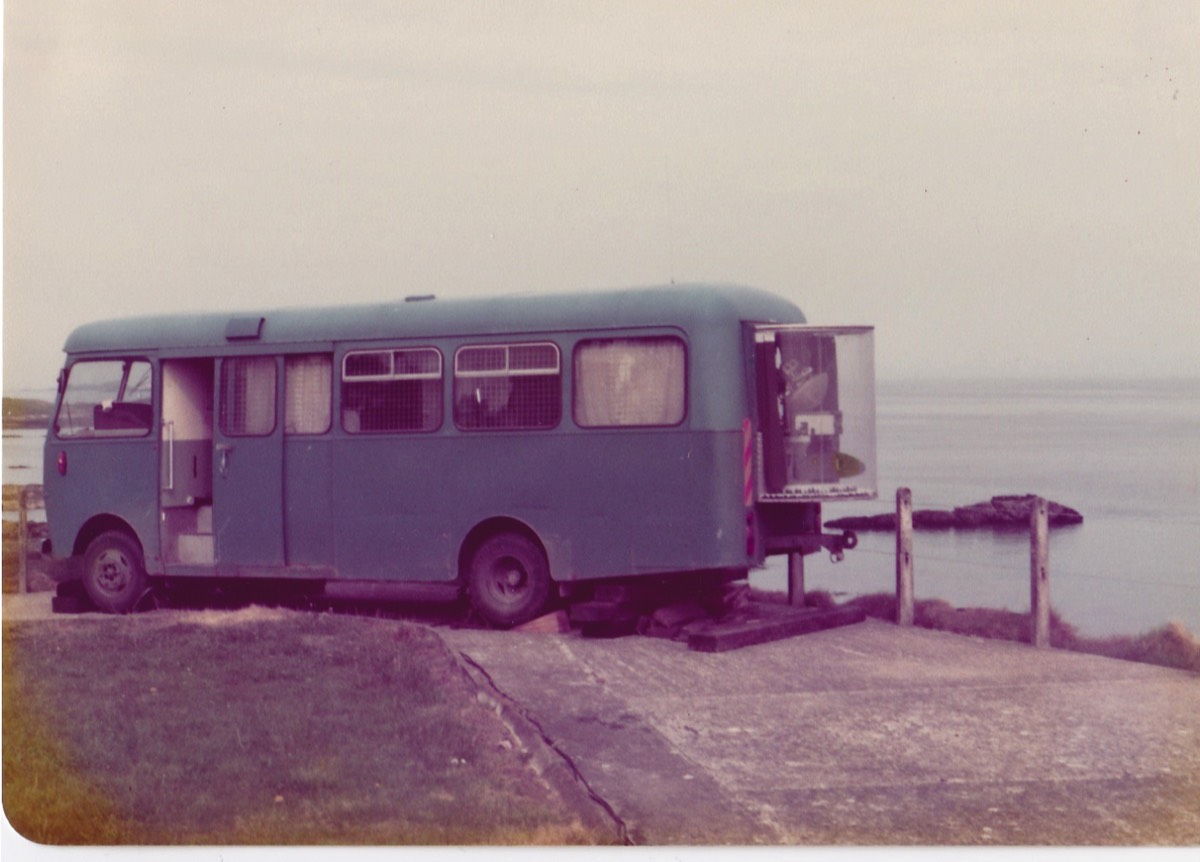
The two photographs which Alastair refers to in his article above. The advanced radar test equipment was mounted in this rather inconspicuous bus and sited, in this instance, at Gin Head.
[Both ©️Alastair Walker]

